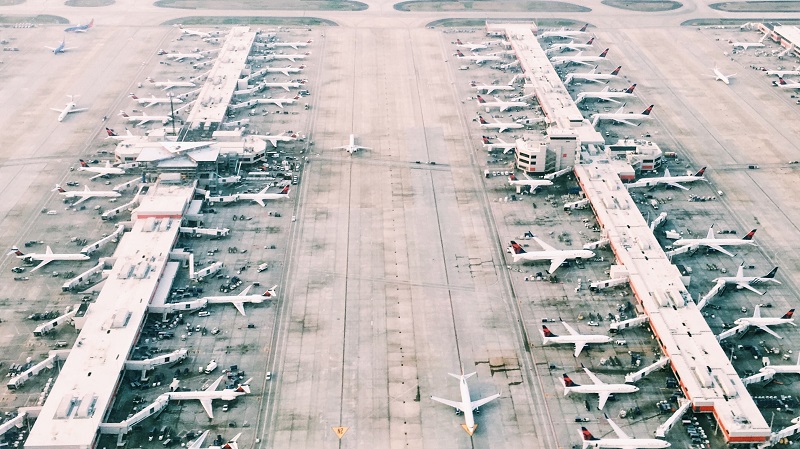
This is the second part of a three-part series of blogs describing ASEAN+3’s transition into the ‘new economy’. Read Part 1 and Part 3.
Our previous blog article discussed the key drivers of East Asia’s transformation from the conventional “manufacturing for exports” strategy to a more broad-based “new economy”, and considered some of the region’s efforts to strengthen its capacity and connectivity. Given the under-investment in infrastructure by several large ASEAN+3 economies since the Asian financial crisis, a large infrastructure capacity gap has emerged. It needs to be filled quickly if the region is to transition to the “new economy” successfully, and sustain the rapid growth and development catch-up which it has managed to achieve during the past few decades.
The first gap is technological capabilities. Technology is both a divider and a leveler. It is extremely difficult to create new technologies and business models, but it seems to be much easier to use, copy, and make moderate improvements to technologies created by front-runners. This applies to both enterprises and workers. For both high-income and middle-income ASEAN+3 economies, there is a need to beef up capacity to do at least two things: create new goods and services which the region’s expanding and increasingly affluent middle class have an ever-growing appetite for; and generate new technologies to produce and distribute these goods and services. For most newly emerging ASEAN+3 economies, the urgency lies in upskilling their workforce quickly, so that an entire generation can hold good jobs in the “new economy”, earn higher wages, and in turn generate the consumption demand to enable continued growth re-balancing within their own countries and the region.
Secondly, the region requires more and better hard infrastructure. Advanced manufacturing requires modern and technologically-advanced production plants, industrial parks and power generators. Modern logistics and distribution services need smart and digitally-equipped spaces for automated sorting, packing and delivery. It also requires efficient connectivity between manufacturers’ production plants, logistics firms’ work spaces, retailers’ brick-and-mortar showrooms, and virtual world sales platforms. Flexible work arrangements to maximize the contribution of higher-quality human capital in the “new economy” demands smart office spaces and back-up sites for IT or digital operations. E-commerce, digital finance and other online economic activities using Big Data require high-tech and reliable complexes complete with cooling set-ups. The burgeoning travel and tourism sector has to be supported by building more airports, seaports, roads, railways, hotels, and spaces for a widening range of services including food and entertainment. To create “smart city” ecosystems, spaces for experiencing services rather than buying goods need to be created; facilities to provide healthcare for the aged and life cycle wellness therapy for the affluent are also needed. While the newly emerging ASEAN+3 economies face a daunting challenge to build all the required hard infrastructure over the next 10-15 years, even the more advanced economies have a lot to do in order to upgrade existing infrastructures and build new ones for the “new economy”.
Thirdly, higher-order soft infrastructure is required. Increasingly sophisticated services being produced and consumed in the “new economy” will require higher-order soft infrastructure. Sound legal and regulatory frameworks are essential. There will be greater scrutiny of intellectual property rights (IPR), legal protection of business owners’ and investors’ rights, professional service standards, payment protocols, and cyber-security. Fast, efficient, secure, and user-friendly digital payment systems will be a must, not a good-to-have. Free trade agreements (FTAs), investment treaties, and mutual recognition arrangements will have to be ironed out to expand cross-border value-chains and facilitate freer flow of quality foreign direct investments (FDI), skilled labor and managerial professionals. Robust IPR frameworks, together with strong enforcement, are vital for copyright-based sectors and those where new technologies and business models are created. Without this, innovation will wither.
Lastly, the region needs better understanding of new value chains. ASEAN+3 economies are still at a very early stage of understanding of the nature of value chains in the “new economy”, much less how to develop competitiveness within these value chains. Take e-commerce as an example. Behind very simple consumer experiences lies a huge amount of complexities that involve multiple parties: suppliers, manufacturers, distributors, transporters, retailers, and “end demand” customers. The success of an e-commerce platform depends on it having an efficient, ideally seamless, touch point between each group of stakeholders, so that they can in turn lower their business costs and sell their products at lower prices to a bigger market. The key components of a successful e-commerce value chain must almost certainly include artificial intelligence and digital systems which are quick, reliable, and user-intuitive; data analytics to process and disseminate a vast amount of information; fraud detection and a robust framework for IPR and consumer protection; and highly-specialized personnel to stay on top of technological requirements. Just as importantly, ASEAN+3 economies need to come together – to pool ideas, technical know-how, and financial resources – in order to develop deep understanding of “new economy” value chains and the types of cross-border connectivity needed for the region to anchor these value chains effectively.
The scale and complexity of these interrelated challenges mean that ASEAN+3 economies need to come together to maximize their strengths, find resources from within the region to address weaknesses, and also provide an attractive value proposition to the rest of the world for global engagement – in trade, technology, and investments. In the next blog, we will discuss how the region can address the funding and foreign exchange gaps to lift up the regional connectivity.
